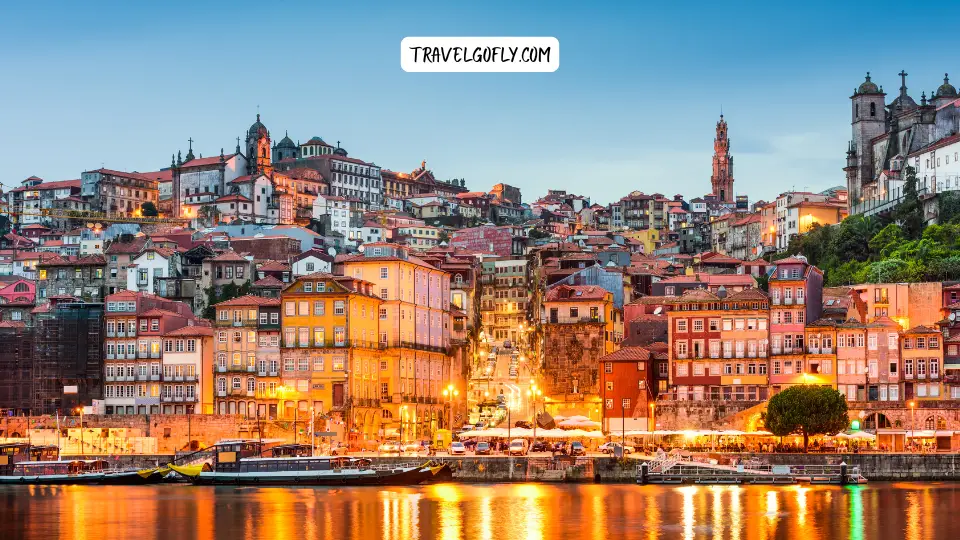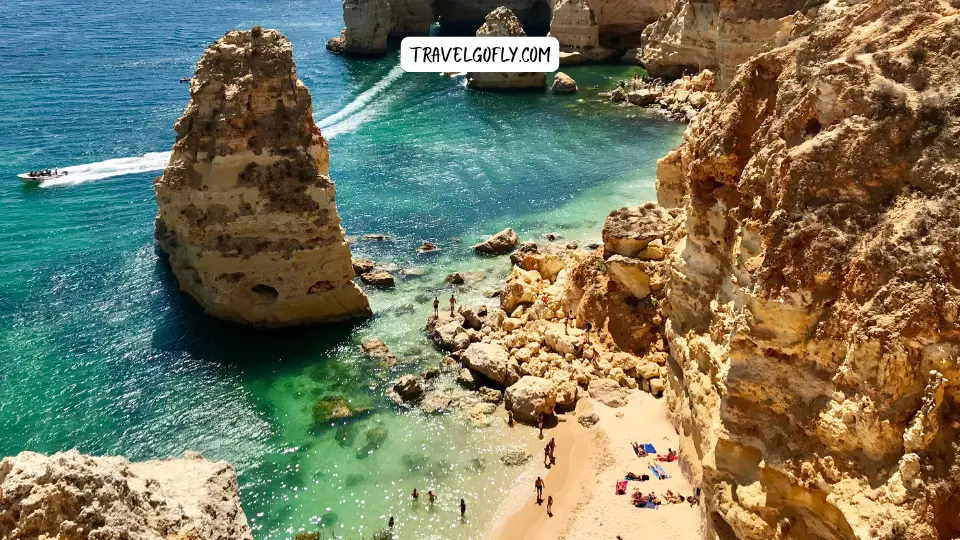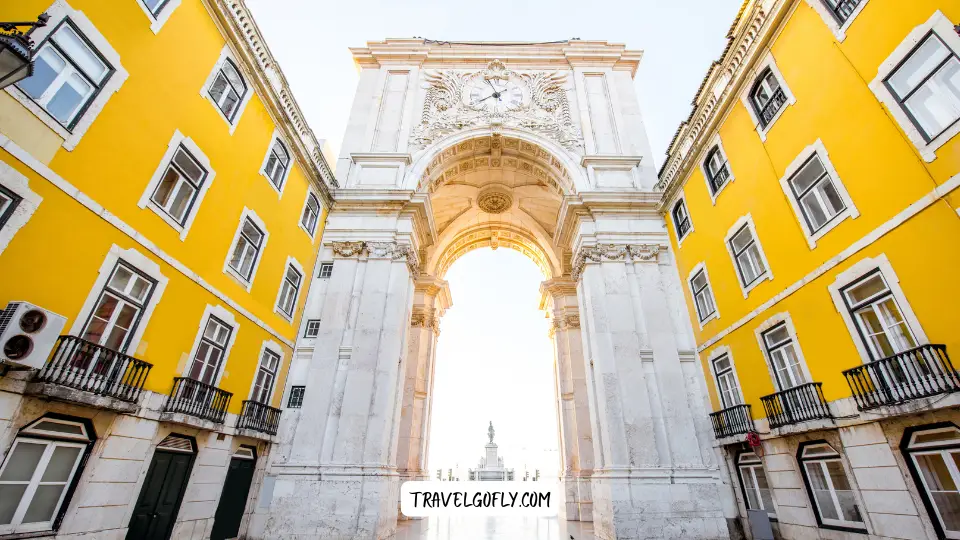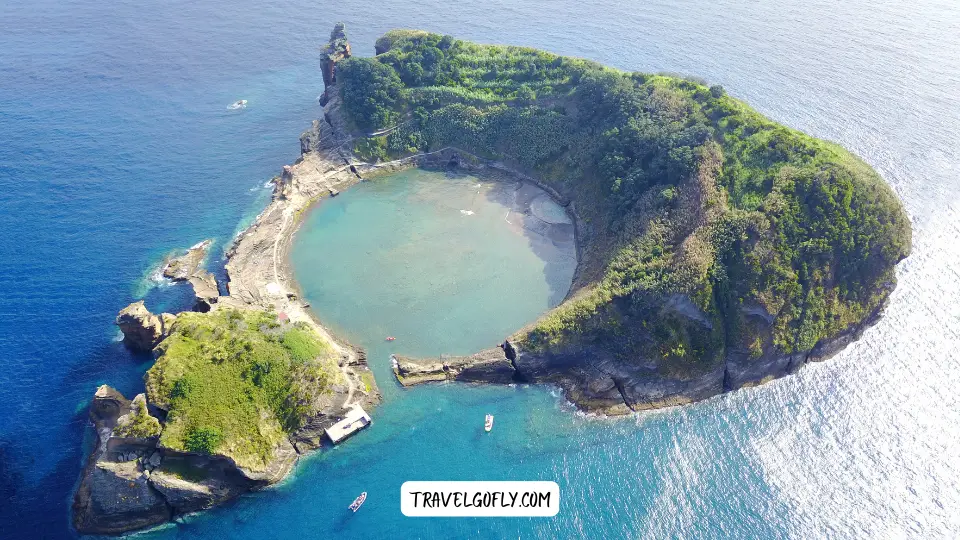Portugal enchanting blend of history, culture, and natural beauty makes it one of Europe most captivating destinations. From the sun-drenched beaches of the Algarve to the historic streets of Lisbon and Porto, this compact country offers extraordinary experiences at every turn. Whether you’re drawn to ancient castles, world-class cuisine, or spectacular landscapes, Portugal delivers unforgettable travel memories. As a passionate explorer who’s traversed Portugal’s diverse regions, I’ve compiled this comprehensive guide to the best things to do in Portugal to help you craft your perfect Portuguese adventure.
Best Things to Do in Portugal in 2025
Lisbon & Surrounds
 Portugal capital city seamlessly blends historic charm with contemporary vibrancy, creating an irresistible atmosphere for travelers. Spread across seven hills overlooking the Tagus River, Lisbon offers a perfect mix of cultural landmarks, culinary delights, and scenic viewpoints.
Portugal capital city seamlessly blends historic charm with contemporary vibrancy, creating an irresistible atmosphere for travelers. Spread across seven hills overlooking the Tagus River, Lisbon offers a perfect mix of cultural landmarks, culinary delights, and scenic viewpoints.
Explore Alfama & São Jorge Castle
Alfama, Lisbon oldest district, is a labyrinth of narrow cobblestone streets and ancient houses that survived the devastating 1755 earthquake. The neighborhood authentic character and stunning views make it a must-visit destination for anyone exploring Portugal.
Perched atop Lisbon highest hill, São Jorge Castle offers panoramic views of the city and river below. This Moorish fortress has stood guard over Lisbon since the 11th century, providing a fascinating glimpse into Portugal’s diverse history.
Insider Tip: Visit Miradouro da Senhora do Monte for the best unobstructed view of Lisbon, including the castle itself. Go at sunset for magical lighting and fewer crowds.
Ride Tram 28
For an authentic Lisbon experience, hop aboard the iconic yellow Tram 28, which winds through the city most picturesque neighborhoods. This historic tram route connects Martim Moniz with Campo Ourique, passing through popular districts like Graça, Alfama, Baixa, and Estrela.
Insider Tip: Board at Martim Moniz around 8-9 AM to avoid the long queues and secure a seat with the best views.
Visit Belém
The historic Belém district houses some of Portugal most significant monuments, including the magnificent Jerónimos Monastery and the iconic Belém Tower. Both are UNESCO World Heritage sites and showcase the ornate Manueline architectural style that celebrates Portugal’s Age of Discoveries.
Insider Tip: Don’t leave without trying the original Pastéis de Belém at the famous Pastéis de Belém bakery. The secret recipe dates back to 1837, and these custard tarts are well worth the wait!
Day Trip to Sintra
Just 30 minutes from Lisbon, Sintra feels like stepping into a fairy tale. This UNESCO World Heritage site features colorful palaces, mystical gardens, and romantic architecture that have inspired artists and writers for centuries.
The vibrant Pena Palace, with its yellow and red facades, stands as the crown jewel of Sintra. Nearby, the mysterious Quinta da Regaleira estate features underground tunnels, hidden symbolism, and the famous Initiation Well.
Insider Tip: Avoid the crowds by visiting Pena Palace first thing in the morning, then continue to Quinta da Regaleira in the afternoon. Consider spending a night in Sintra to experience its magical atmosphere after day-trippers leave.
Porto & The North
 Portugal second-largest city offers a distinctly different atmosphere from Lisbon, with its medieval Ribeira district, port wine heritage, and authentic northern Portuguese culture.
Portugal second-largest city offers a distinctly different atmosphere from Lisbon, with its medieval Ribeira district, port wine heritage, and authentic northern Portuguese culture.
Walk the Ribeira District
Porto UNESCO-listed historic center is a maze of winding lanes, colorful houses, and lively squares. The Ribeira district, hugging the Douro River, is particularly picturesque with its traditional buildings, waterfront restaurants, and vibrant atmosphere.
Insider Tip: Explore the area in the early morning or evening when the light creates magical reflections on the river and brings the colorful buildings to life.
Cross the Dom Luís I Bridge
This double-deck metal arch bridge spans the Douro River, connecting Porto to Vila Nova de Gaia. Designed by a student of Gustave Eiffel, the bridge offers spectacular views of both cities and the river below.
Insider Tip: Walk across the upper level for the best panoramic views, but be aware that trams also use this level stay within the pedestrian area for safety.
Go Port Wine Tasting in Vila Nova de Gaia
Across the river from Porto, Vila Nova de Gaia is home to dozens of port wine cellars where you can learn about production methods and sample various styles of Portugal famous fortified wine.
Insider Tip: Visit Graham Port Lodge for an excellent tour and tasting experience with stunning views over Porto from their terrace.
Explore the Douro Valley
The UNESCO-listed Douro Valley is the oldest demarcated wine region in the world. Its terraced vineyards create one of the most spectacular landscapes in Portugal, best experienced via river cruise or scenic train ride.
Insider Tip: For the most authentic experience, stay overnight at a quinta (wine estate) to immerse yourself in the region’s wine heritage.
The Algarve Coast
 Portugal southern coast is renowned for its dramatic cliffs, golden beaches, and charming fishing villages. The Algarve offers some of the most stunning coastal scenery in Europe.
Portugal southern coast is renowned for its dramatic cliffs, golden beaches, and charming fishing villages. The Algarve offers some of the most stunning coastal scenery in Europe.
Discover Stunning Beaches
The Algarve 100-mile coastline boasts some of Europe most beautiful beaches. Praia da Marinha, with its limestone cliffs and crystal-clear waters, consistently ranks among the world top beaches.
Insider Tip: Visit Praia do Camilo near Lagos for a less crowded but equally beautiful beach experience just be prepared to descend (and later climb) the 200 wooden steps!
Explore Benagil Cave
This sea cave with its natural oculus has become one of Portugal’s most famous natural landmarks. Light streams through the ceiling opening, creating magical effects on the sandy beach inside.
Insider Tip: Book a kayak tour instead of a larger boat tour to actually enter the cave and spend time on the hidden beach inside.
Visit Lagos & Ponta da Piedade
Lagos combines historical charm with stunning coastal scenery. The town’s historic center features cobblestone streets, traditional buildings, and remnants of its maritime past.
Nearby Ponta da Piedade showcases the Algarve dramatic coastal beauty, with golden cliffs, sea arches, and emerald waters.
Insider Tip: Visit Ponta da Piedade around sunrise or sunset for the most spectacular lighting conditions for photography.
Central Portugal
 Often overlooked by first-time visitors, Central Portugal offers authentic cultural experiences, historic towns, and fewer crowds than coastal regions.
Often overlooked by first-time visitors, Central Portugal offers authentic cultural experiences, historic towns, and fewer crowds than coastal regions.
Visit Óbidos
This perfectly preserved medieval walled town remains largely unchanged since the 13th century. Walking its narrow streets lined with whitewashed houses adorned with colorful flowers transports you back in time.
Insider Tip: Try the local specialty, Ginja de Óbidos (cherry liqueur), served in small chocolate cups from the numerous shops along the main street.
Explore Coimbra
Home to one of Europe oldest universities (established in 1290), Coimbra boasts a rich academic tradition. The university Baroque library, Biblioteca Joanina, is one of the world most beautiful with its richly decorated rooms and precious manuscripts.
Insider Tip: Visit during term time to see students in traditional black capes and experience the unique academic atmosphere.
Discover Tomar
Tomar Convent of Christ, another UNESCO World Heritage site, was once the headquarters of the Knights Templar in Portugal. Its famous Manueline window is considered one of the masterpieces of European Renaissance architecture.
Insider Tip: Explore the convent “Charola,” a unique round church modeled after Jerusalem Church of the Holy Sepulchre.
The Islands (Madeira & Azores)
 Portugal Atlantic archipelagos offer distinct experiences from the mainland, with dramatic landscapes, unique flora, and outdoor adventures.
Portugal Atlantic archipelagos offer distinct experiences from the mainland, with dramatic landscapes, unique flora, and outdoor adventures.
Hiking in Madeira
Madeira network of levadas (irrigation channels) doubles as one of the world’s most unique hiking systems. These trails wind through lush forests, alongside waterfalls, and across dramatic mountain scenery.
Insider Tip: The Levada do Caldeirão Verde is one of the most beautiful trails, featuring a tunnel section and ending at a magnificent waterfall bring a headlamp for the tunnels!
Whale Watching in the Azores
The Azores archipelago is one of the world best locations for whale watching, with over 20 cetacean species frequenting its waters. São Miguel Island offers excellent viewing opportunities from March through October.
Insider Tip: Book with a responsible operator who follows wildlife viewing guidelines and employs marine biologists as guides.
Explore São Miguel Island
The largest Azorean island features diverse landscapes, from volcanic lakes and hot springs to lush forests and picturesque villages. The twin lakes of Sete Cidades, with their contrasting blue and green waters, create one of Portugal’s most iconic vistas.
Insider Tip: Visit the Furnas Valley to sample traditional cozido das Furnas, a meat and vegetable stew cooked underground using natural volcanic heat.
Essential Portuguese Experiences
Indulge in Food & Drink
 Portuguese cuisine combines fresh ingredients with simple preparation methods, creating dishes that showcase natural flavors. Beyond the famous pastéis de nata, don’t miss these culinary experiences:
Portuguese cuisine combines fresh ingredients with simple preparation methods, creating dishes that showcase natural flavors. Beyond the famous pastéis de nata, don’t miss these culinary experiences:
- Sample fresh seafood cataplana, a flavorful stew cooked in a distinctive copper pot
- Try bacalhau (salt cod), prepared in hundreds of different ways across Portugal
- Enjoy simple grilled sardines, especially during June Santo António festival
- Discover Portugal incredible wine diversity beyond port, including vinho verde and wines from Alentejo
Insider Tip: For an authentic food experience, look for restaurants with a “prato do dia” (dish of the day) offering homestyle cooking at reasonable prices.
Experience the Culture
Portugal rich cultural heritage provides numerous opportunities for meaningful engagement with local traditions.
- Listen to live fado, Portugal’s soulful traditional music, in intimate venues in Lisbon’s Alfama or Mouraria districts
- Admire the country’s azulejo tile tradition, especially at Lisbon National Tile Museum or Porto’s São Bento Station
- Visit vibrant local markets like Lisbon Mercado da Ribeira or Porto Bolhão Market
- Participate in traditional festivals like Óbidos Medieval Festival or Porto São João celebrations
Insider Tip: For authentic fado without tourist markup, try A Tasca do Chico in Lisbon Bairro Alto neighborhood.
Enjoy the Outdoors
Portugal’s diverse landscapes offer exceptional outdoor experiences throughout the year.
- Surf world-class waves in Nazaré, Peniche, or Ericeira
- Hike the spectacular Rota Vicentina coastal trails in the Alentejo
- Explore the Serra da Estrela mountain range, Portugal’s highest continental mountain system
- Go birdwatching in the Ria Formosa Natural Park near Faro
Insider Tip: Nazaré draws professional surfers seeking monster waves in winter, but novices can find gentle waves for learning at nearby beaches like Praia do Norte in summer.
Historical & Architectural Wonders
Portugal’s 900-year history has left a remarkable architectural legacy spanning various styles and influences.
- Explore the spectacularly well-preserved Roman ruins at Conímbriga
- Visit the Gothic masterpieces of Batalha and Alcobaça Monasteries
- Discover Portugal Moorish heritage at Silves Castle in the Algarve
- Admire Baroque extravagance at Mafra National Palace near Lisbon
Insider Tip: Purchase a combined ticket for Batalha, Alcobaça, and Tomar monuments to save on admission fees.
Practical Portugal Travel Tips
 Best Time to Visit: Spring (April-June) and fall (September-October) offer ideal weather, fewer crowds, and lower prices. Summer brings perfect beach conditions but higher temperatures and crowds, while winter remains mild but rainy, especially in the north.
Best Time to Visit: Spring (April-June) and fall (September-October) offer ideal weather, fewer crowds, and lower prices. Summer brings perfect beach conditions but higher temperatures and crowds, while winter remains mild but rainy, especially in the north.
Getting Around: Portugal train network connects major cities efficiently, while buses reach smaller towns. Consider renting a car for exploring remote areas like the Alentejo or Douro Valley. In cities, public transportation is excellent, supplemented by affordable taxis and ride-sharing services.
Sample Itinerary Ideas:
- 1 Week: Lisbon (3 days, including Sintra) + Porto (2 days) + Algarve (2 days)
- 2 Weeks: Add Central Portugal, Douro Valley, and more time in each region
- 3 Weeks: Include the islands (Madeira or Azores) and off-the-beaten-path regions like Alentejo
Language & Basic Phrases: While English is widely spoken in tourist areas, learning a few Portuguese phrases enhances your experience:
- Olá (hello)
- Obrigado/Obrigada (thank you – masculine/feminine)
- Por favor (please)
- Fala inglês? (Do you speak English?)
- A conta, por favor (The bill, please)
Budget Considerations: Portugal remains one of Western Europe most affordable destinations. Budget travelers can manage on €50-70 per day, mid-range on €100-150, and luxury travelers on €200+. Eating at local tascas (taverns) and traveling outside peak season significantly reduces costs.
Portugal Travel FAQs
How many days do you need in Portugal?
A minimum of 7-10 days is recommended to experience Portugal highlights. With 14 days, you can explore more deeply and include off-the-beaten-path destinations. Three weeks would allow you to visit the mainland and either Madeira or the Azores islands.
What’s the best way to get around Portugal?
For city-to-city travel, trains offer comfort and scenic routes. Buses reach smaller towns efficiently. Within cities, use public transportation networks. For flexibility in rural areas, rent a car but avoid driving in historic city centers where streets are extremely narrow and parking is limited.
When is the best time to visit Portugal?
May-June and September-October offer ideal conditions with pleasant temperatures, fewer crowds, and lower prices. July-August brings perfect beach weather but higher prices and crowds. November-April sees more rainfall, especially in the north, but milder temperatures than much of Europe.
Is Portugal expensive to visit?
Portugal remains one of Western Europe best values. Accommodations, dining, and transportation typically cost 30-50% less than in countries like France or Italy. Eating at local establishments rather than tourist restaurants, traveling in shoulder seasons, and staying in guesthouses or apartments can significantly reduce costs.
Do I need to speak Portuguese to visit Portugal?
While English is widely spoken in tourist areas, restaurants, and hotels, learning basic Portuguese phrases is appreciated and enhances your cultural experience. Portuguese people are typically patient and helpful with language barriers.
Conclusion
Portugal remarkable diversity of experiences packed into a relatively small and accessible country makes it one of Europe most rewarding destinations. From the vibrant streets of Lisbon to the terraced vineyards of the Douro Valley, from the golden beaches of the Algarve to the dramatic landscapes of the Azores, Portugal offers something for every traveler.
This Portugal travel guide highlights the best things to do in Portugal, but the country true magic lies in its warm hospitality, authentic culture, and the joy of unexpected discoveries. Whether you’re drawn by history, gastronomy, nature, or simply the relaxed Portuguese way of life, your visit will leave you understanding why Portugal has captured the hearts of travelers worldwide.
What’s on YOUR Portugal bucket list? Share your plans or questions in the comments below!
